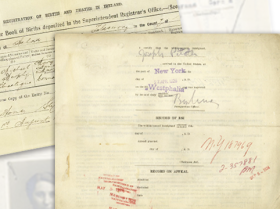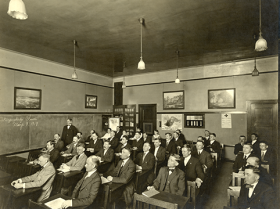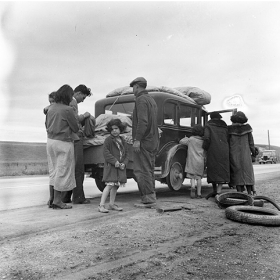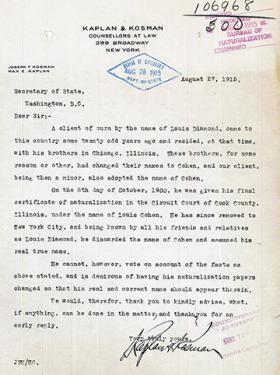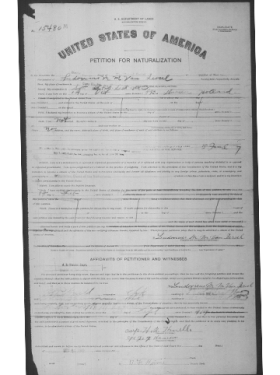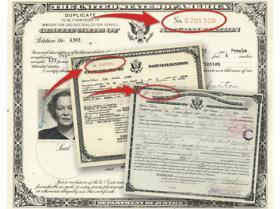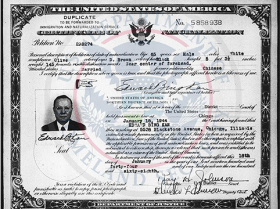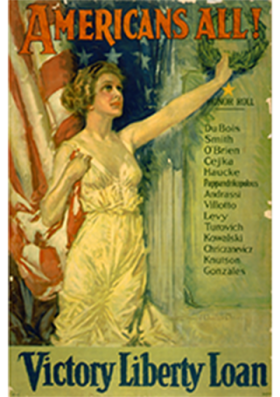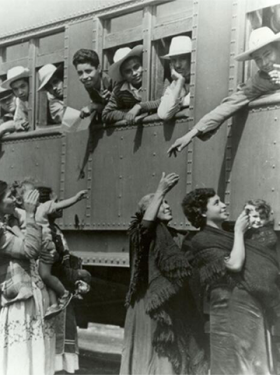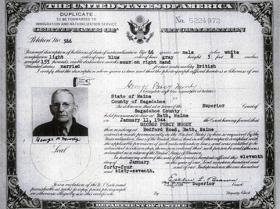Stories from the Archives
Read the stories of people and programs that make up federal immigration history, learn about the most interesting items in our library collection, or get tips on researching in agency records.
Type a topic or time period into the “Search by Content” box below or browse through the articles.
The USCIS Genealogy mailbox regularly receives questions about locating historical deportation or exclusion records. The question usually follows discovery of a passenger list record or List of Aliens Held for Special Inquiry showing an immigrant excluded and returned, or comes from a family story of a relative deported many years ago.
Because it is often featured in media reports, popular culture, and educational exercises, the civics test is perhaps the most well-known part of naturalization process. For many potential citizens it is also one of the most worrisome steps to becoming a United States citizen.
Mexican-American family historians and other interested researchers occasionally contact the History Office in search of “Mexican Repatriation” records for individuals who left the U.S. during the Great Depression (1929-1939).
"We know from experience that records of entry of many noncitizens into the United States contain assumed or incorrect names and other errors." From INS Operations Instruction 500.1 I, Legality of entry where record contains erroneous name or other errors, December 24, 1952.
Among the reasons for the "incorrect" names were the immigrant's using:
During the First World War, thousands of foreign-born citizens and immigrants joined the United States military as the nation tried to meet the massive manpower requirements of the American Expeditionary Forces (AEF). Of these immigrant combatants, 13 received the Medal of Honor for their wartime valor. One of these men, Ludovicus Matheus Van Iersel, volunteered to serve again in the Second World War. This is his story.
Certificate of Naturalization # 1 and the “First Naturalized U.S. Citizen”
Several curious researchers have asked the USCIS History Office, “Who was the first naturalized U.S. citizen?”
Unfortunately, we don’t know.
But we do know who received Certificate of Naturalization #1 and we know he is not the first naturalized U.S. citizen.
On December 17, 1943, President Franklin D. Roosevelt signed into law an Act to Repeal the Chinese Exclusion Acts.
As the American military mobilized to enter World War I in 1917, its ranks filled with a diverse cross-section of American society, including immigrants from around the world.
The USCIS History Library holds several photographs of the Mexican Agricultural Labor Program, commonly called the “Bracero Program,” dating from 1951-1964. The photographs provide an interesting firsthand glimpse at how INS inspected and admitted Braceros on the Mexican border.
The Certificate of Naturalization is perhaps the most important of the three naturalization records usually found in U.S. Citizenship and Immigration Services’ (USCIS) historic Certificate Files (“C-Files”) because Certificates of Naturalization help protect naturalized persons’ rights as U.S. citizens and the U.S. government from false claims to American citizenship. This study surveys the development of Certificates of Naturalization during the first half of the 20th Century.

